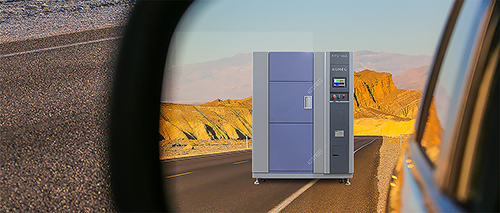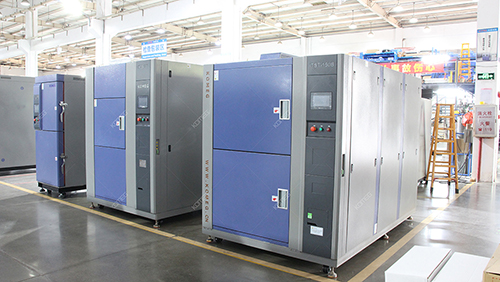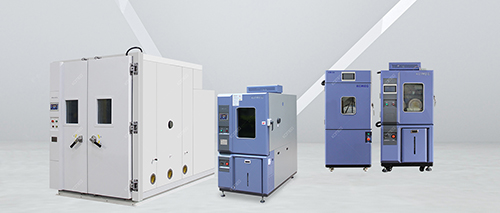First. Maintenance of electrical parts
1. The circuit system shall be cleaned at least once every four months to prevent dust in the air from attaching to the cold parts of the machine, especially the condenser, evaporator and other accessories.
2. The distribution board shall be cleaned and maintained regularly. Dust will affect the heat dissipation and electrical insulation of components; Loosening of contact connectors of components and parts will put the whole equipment in dangerous working condition, which may burn the components or cause fire. When cleaning the distribution board, use a vacuum cleaner to remove the dust from the distribution board. After the component contact connector is repaired, use the matching tool to lock it.
3. Observe whether the high-current contactor and circuit breaker (control compressor and fan) have discoloration and scorch marks, and replace them in time if any.
Second. Maintenance of waterways and refrigeration units
1. The radiator (condenser) of the refrigeration unit should be regularly maintained and kept clean. The dust sticking to the condenser will cause the poor heat dissipation of the compressor to cause the high pressure switch to trip and cause the false alarm. The condenser should be maintained regularly every month. Use a vacuum cleaner to remove the dust attached to the condenser's heat dissipation mesh, or use a hard brush after starting up, or use a high pressure nozzle to blow the dust away.
2. The refrigeration system is the core of the thermal shock chambers. Every year, all copper pipes must be inspected to see if there is any leakage of snow, and all horn joints and welding joints must be treated immediately if there is any leakage of oil. Please patrol the copper pipe, each horn joint and welding joint once a month. If there is any abnormality, please notify Keming or directly find professional personnel to deal with it.
3. When the equipment is not used for a long time, the compressor should be started once every two weeks, and the power-on time should not be less than 1 hour.
4. Waterway system: please check regularly (at least once a month) to ensure that there is no water leakage or blockage in the pipeline, and the water level of each water level control cup is free of leakage and normal. Regularly clean the dirt or sediment in the pipeline and water level control cup, and strictly use the water source that meets the water quality requirements, which is conducive to ensuring the smoothness of the water system for a long time.
5. For dry and wet ball type test chamber, it is necessary to check the dry and wet ball gauze frequently. When the gauze becomes hard or dirty, it should be replaced in time. It is recommended to replace it once every three months.
6. The water storage in the humidifier should be replaced once a month to ensure clean water quality and smooth water flow.
Third. Box maintenance and cleaning

1. Box cleaning: The inside of the box should be cleaned at least once every half a year. When cleaning, please use a vacuum cleaner to remove dust or use compressed air to blow dust.
The outer box needs to be cleaned once a month. When cleaning, it can be wiped with anti-rust oil. Do not use corrosive liquid.
2. Regularly check whether the two gas-type temperature protection switches in the high and low temperature cabin are invalid, and the temperature setting value is the factory value by default. By trying to manually adjust to the current studio temperature value, the machine will give an alarm under normal conditions, indicating that the temperature protection switch is effective.
3. After each test and use of the equipment, the possible residual sundries in the working room should be removed in time to keep the working room clean, so as to prevent the sundries from polluting the working room after being inhaled by the air duct.
Fourth.Precautions for operation
1. Try to avoid frequent start and stop of the thermal shock chambers (try not to start the operation again within five minutes after the thermal shock chambers stops), so as not to increase the mechanical load of the refrigeration system compressor and affect the service life of the unit.
2. It is strictly forbidden to test flammable, explosive, volatile and corrosive substances in the thermal shock chambers, otherwise it will cause accidents and cause machine damage or test result failure.
3. The placement of the test object shall not affect the balance and smoothness of the air flow in the workshop, otherwise it will affect the performance of the impact box and the authenticity of the test. On any section perpendicular to the wind direction of the internal circulation airflow, the total area of the test object shall not be greater than 1/3 of the sectional area of the workroom in that direction.
4. Before the operation of the thermal shock chambers, the door of the test chamber should be closed and closed tightly, otherwise the chamber gas will leak out and the test will not meet the performance requirements.
5. The hot and cold shock box should be operated by professional personnel to avoid unnecessary damage due to improper operation.
6. If the thermal shock chambers operates under low temperature conditions below 0 ℃, try to avoid opening the door of the test box, because opening the door can easily cause frost in the evaporator and other parts of the refrigeration system during the low temperature test, especially when the lower the test temperature is, the more serious the situation is. If the door must be opened, try to shorten the opening time.
7. After the thermal shock chambers is used to complete the low temperature test run, it is necessary to set the test temperature condition to 30 ℃ for drying treatment for about half an hour (return to normal temperature, the temperature controller can set this automatic function), and then shut down and open the door of the test box to take and place the test article, so as not to affect the test performance of the next operation condition. If the drying treatment at 30 ℃ is not carried out, the machine will fail.
8. When the thermal shock chambers operates at high temperature and high humidity, it is forbidden to open the box door, otherwise the following adverse consequences may be caused:
-
The high temperature gas rushed out of the test chamber, which is easy to cause personal burns.
-
The inside of the box door, the test area and the surface of the test material still maintain a high temperature, which is easy to burn the hands.
-
High temperature air may trigger the fire alarm and cause misoperation.
The opening operation of the thermal shock chambers door: the operator must move backward along the opening direction through the test box door to prevent a large amount of hot gas from gushing out of the test box and hurting people just after the high temperature test.
9. During the operation of the thermal shock chambers, do not touch and check the machine system components with your hands to avoid electric shock or motor stranding accidents; Therefore, please stop the machine and turn off the power before checking.














